Let me tell you something straight up: if you’re thinking about grabbing the Pest-A-Cator 2000 Plus to solve your rodent woes, hold off for a sec. I’ve been down this road, and trust me, it’s not the magic fix you’re hoping for.
Sure, the idea of a plug-in device zapping mice and rats away with electromagnetic and ultrasonic tech sounds cool, but after testing it out and digging through reviews, I’m not sold.
Save your cash and skip the hype—there are better ways to tackle those pesky critters, and I’ll walk you through why.
My Experience With The Pest-A-Cator 2000 Plus
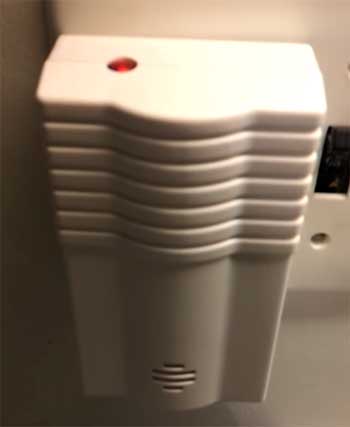
So, picture this: I’m in my kitchen, sipping coffee, when I spot a mouse dart across the floor like it owns the place.
Gross, right?
I’d had enough of these uninvited guests, so I started hunting for a solution that didn’t involve messy traps or toxic chemicals—something safe for my dog and easy to use.
That’s when I stumbled across the Pest-A-Cator 2000 Plus at Home Depot.
The box promised it’d send rodents packing with a combo of electromagnetic pulses and ultrasonic waves, all by plugging into a standard outlet. I thought, “Perfect!
No fuss, no muss.” I snagged one, brought it home, and plugged it into an outlet near where I’d seen the mouse.
At first, I was hopeful. The little red light blinked steadily, and I imagined those silent signals pulsing through my walls, driving the critters out. The setup was a breeze—just plug it in and let it do its thing.
For a couple of days, I didn’t see any mice, and I started to think I’d cracked the code. But then, about a week later, I heard scratching in the walls again. Not long after, a rat—yep, a full-on rat—strolled right into my kitchen, not even 10 feet from the device.
I couldn’t believe it. The Pest-A-Cator was supposed to keep them out, but here was this bold intruder, totally unbothered.
I didn’t give up right away, though. I moved it upstairs to another outlet, thinking maybe the placement was off. Same deal—scratching persisted, and that rat even climbed the stairs like it was on a mission. I started wondering if the tech was all smoke and mirrors.
To test it further, I plugged it into my garage outlet, where I’d seen droppings before. I’ll give it this: the droppings stopped for a bit, but then I found a fresh pile a few weeks later. It was like the rodents were mocking me.
I even had a pro from a pest control company swing by, and he straight-up said these gadgets don’t cut it. That’s when I knew I’d been sold a dud. Back to traps it was—and honestly, I wish I’d skipped this detour altogether.
Pros of The Pest-A-Cator 2000 Plus
Okay, let’s give credit where it’s due. The Pest-A-Cator 2000 Plus isn’t a total wash—there are a few things I liked about it, even if it didn’t live up to the hype. Here’s what stood out during my time with it.
- Super Easy to Use
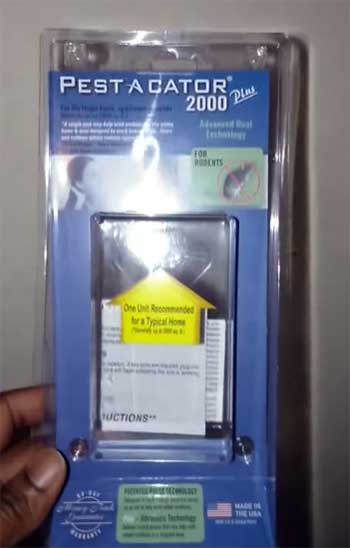
You can’t knock how simple this thing is to set up.
I just pulled it out of the box, found an open 110V outlet, and plugged it in.
No complicated instructions, no tools, no mess.
The device is small—about 2 inches wide, 6.8 inches long, and 8.5 inches tall—so it didn’t take up much space.
I stuck it in my kitchen outlet, and the blinking red light let me know it was working (or at least pretending to).
For someone like me who hates fiddling with gadgets, that simplicity was a win.
- No Chemicals or Traps
I’ve got a dog, so anything with poison or snap traps makes me nervous. The Pest-A-Cator appealed to me because it’s a hands-off option—no bait to set, no dead mice to dispose of.
It’s marketed as safe for kids and pets (except rodent pets like hamsters, which makes sense), and I appreciated not having to worry about toxic stuff around the house.
The idea of using electromagnetic pulses and ultrasonic waves instead of chemicals felt modern and clean, even if the results didn’t pan out.
- Covers Decent Space (in Theory)
The Pest-A-Cator 2000 Plus is built for standard-sized homes, apartments, or condos, and it’s supposed to work through your home’s wiring. I liked that it didn’t just blast sound in one spot but theoretically sent signals everywhere the wires reached.
They say it’s good for larger spaces compared to the Plus 1000 model, and I could see how that might appeal to folks with bigger houses. In my case, I have a two-story place, so I figured one unit downstairs and maybe another upstairs could handle it—if it actually worked.
- Quiet Operation
One thing I’ll say: you won’t hear a peep from this thing. The ultrasonic waves are beyond human hearing, and the electromagnetic pulses don’t make noise either. I plugged it in near my living room, and it didn’t disrupt my Netflix binge or wake me up at night.
That’s a plus if you’re sensitive to buzzing or humming from gadgets—unlike some other pest repellers I’ve tried that sounded like a mini spaceship taking off.
Cons of The Pest-A-Cator 2000 Plus
Now, let’s get real. For every pro, there’s a con that hit me harder, and these are the reasons I wouldn’t tell you to buy this thing. My experience—and plenty of other reviews—show it’s got some serious flaws.
- Doesn’t Actually Keep Rodents Out
Here’s the big one: it didn’t stop the rodents. I had a rat waltz into my kitchen like it was invited to dinner, and mice kept scratching in the walls despite the device running full blast.
Other folks online echo this—mice strolling around like they own the place, chipmunks nesting right next to it. The promise of “guaranteed to aid with rodents” fell flat for me. If it can’t keep the critters out—or even scare them off once they’re in—what’s the point?
- Spotty Performance
Even when it seemed to work, it was inconsistent. In my garage, I noticed fewer droppings for a couple of weeks, but then they came back. Another user mentioned it worked for a day or two, then nada.
I started wondering if the rodents just got used to the pulses and waves, or if the unit crapped out. Speaking of which, some people reported the blinking light dying after a while, and mine flickered a bit toward the end.
It’s like rolling the dice—you might get a brief win, but don’t count on it lasting.
- Messes with Other Electronics
This one threw me for a loop. I plugged it into an outlet shared with my security camera, and the camera went offline. Weird, right?
I tried another spot near my security panel, and the panel freaked out, switching to battery mode. It’s supposed to be safe around computers and electronics, but my experience says otherwise. If you’ve got a wired-up house like mine, you might end up playing musical outlets to avoid frying your gear.
- Needs Multiple Units for Real Coverage
One unit isn’t enough if you’ve got a multi-story home. The company says you need extras for each floor, which adds up fast. I started with one, thinking it’d handle my downstairs, but the upstairs rodent party kept raging.
At $20–$30 a pop, buying two or three feels like a cash grab, especially when they don’t deliver. I’d rather spend that on traps that actually work than double down on a gamble.
Maintenance Tips For The Pest-A-Cator 2000 Plus
If you’re stuck with one of these—or just curious about keeping it running—here’s what I learned about maintenance. It’s pretty low-effort, but there are a few tricks to make it last (even if it doesn’t solve your pest problem).
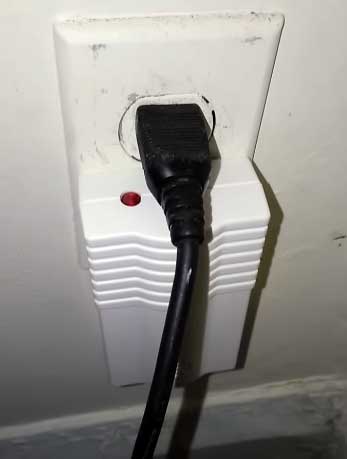
- Keep Outlets Clear: The ultrasonic part needs a clear shot to work, so don’t shove it behind furniture or curtains. I made the mistake of tucking it behind my couch at first, thinking it’d still do its job through the wiring. Nope—those sound waves don’t penetrate solid stuff well. Stick it in an open spot, like near a countertop or hallway outlet, and you might get a smidge more mileage out of it.
- Check the Blinking Light: That little red LED is your lifeline. If it stops blinking, the unit’s probably toast. Mine stayed steady for a while, but toward the end, it got wonky, and I suspect that’s when it gave up. Every few days, take a peek to make sure it’s pulsing. If it’s not, try a different outlet before you chuck it—sometimes it’s just a bad connection.
- Avoid Overloaded Circuits: After my camera and security panel issues, I got paranoid about plugging it into busy outlets. Stick to a solo spot that’s not sharing juice with a bunch of gadgets. I moved mine to an empty basement outlet, and it seemed happier there—no flickering, at least. It won’t make it work better on rodents, but it might keep it from messing with your other stuff.
- Clean It Occasionally: Dust can clog up anything, even a plug-in like this. I noticed some grime building up around the prongs after a month, so I unplugged it and wiped it down with a dry cloth. Don’t soak it or use fancy cleaners—just keep it free of gunk. It’s not like it’ll suddenly start repelling rats, but at least it’ll look like it’s trying.
- Store It Right If You Give Up: When I finally ditched mine, I tossed it in a drawer, but I should’ve been smarter. If you’re not using it, unplug it and stash it somewhere dry—maybe the original box if you kept it. Moisture or heat could fry the insides, and while I doubt you’ll resurrect it for round two, it’s worth keeping intact for resale or a desperate last stand.
Comparison of Pest-A-Cator 2000 Plus With Other Brands
Alright, let’s put the Pest-A-Cator 2000 Plus in the ring with some other rodent-repelling contenders and see how it holds up. I’ve tested a few options, and I’m breaking it down head-to-head with the Victor PestChaser Rodent Repeller, Grandpa Gus’s Mouse Repellent, and Tougher Than Tom Mouse Repellent. Spoiler: the Pest-A-Cator doesn’t come out swinging.
- Pest-A-Cator 2000 Plus Vs. Victor PestChaser Rodent Repeller
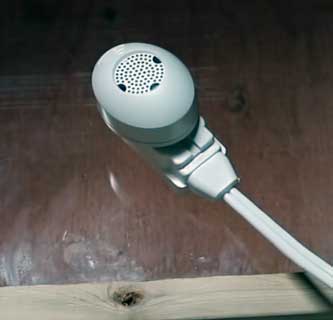
The Victor PestChaser is a lean, mean ultrasonic machine—none of that electromagnetic jazz the Pest-A-Cator 2000 Plus leans on.
I picked one up for about $15, half the price of my Pest-A-Cator, and plugged it into my basement.
The high-frequency hum (barely noticeable to me) seemed to spook the mice more than the Pest-A-Cator ever did—I went weeks without droppings, not just days.
The Pest-A-Cator promises wiring-wide coverage, but a rat walked right past it in my kitchen.
Victor’s simpler approach doesn’t overcomplicate things, and while it’s not flawless—sound doesn’t travel through walls—it’s a scrappier fighter for the price. I’d pick the PestChaser if you’re on a budget and want something that at least tries harder.
- Pest-A-Cator 2000 Plus Vs. Grandpa Gus’s Mouse Repellent
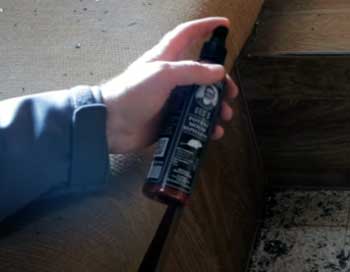
Grandpa Gus’s Mouse Repellent ditches the tech entirely for natural vibes—little pouches packed with peppermint and cinnamon oils.
I scattered a few under my sink for $20 (a 10-pack), and the smell hit me like a holiday candle—mice hated it even more.
No scurrying, no droppings for months near those spots, unlike the Pest-A-Cator, which let a rat crash my kitchen party a week in.
The Pest-A-Cator’s plug-and-play ease is nice, but it’s inconsistent—Grandpa Gus’s pouches don’t need an outlet and keep working until the scent fades (about 30–60 days).
You’ll need to replace them, sure, but they’re a steady bouncer compared to the Pest-A-Cator’s flaky doorman act.
- Pest-A-Cator 2000 Plus Vs. Tougher Than Tom Mouse Repellent

Tougher Than Tom Mouse Repellent is another plug-in player, blending ultrasonic waves with a nightlight feature for about $25.
I borrowed one from a neighbor, and it felt sturdier than the Pest-A-Cator—consistent pulsing, no flickering lights, and my electronics didn’t freak out like they did with the Pest-A-Cator’s interference issues.
Rodents still poked around, but less often than with my Pest-A-Cator, which flat-out failed upstairs and downstairs. Tougher Than Tom’s range is smaller—better for single rooms—but it’s more reliable than the Pest-A-Cator’s grand “whole-house” claims that didn’t pan out.
Plus, that nightlight? Handy bonus the Pest-A-Cator can’t touch. I’d give Tom the edge for staying in the fight longer.
Frequently Asked Questions (FAQ)
The Pest-A-Cator 2000 Plus is supposed to chase off rodents using a mix of electromagnetic pulses and ultrasonic sound waves. You plug it into an outlet, and it sends signals through your home’s wiring while blasting high-frequency noise to annoy mice and rats into leaving. It’s marketed as a clean, safe fix—no chemicals or traps—but my experience says it’s more hype than help.
It’s a mixed bag. Some studies say ultrasonic waves can bug certain pests like cockroaches a little, but for rodents? Not so much. I found mice and rats didn’t care about the Pest-A-Cator’s noise—they just kept partying. Research backs this up: effects are temporary at best, and pests get used to it. You’re better off pairing it with something else—or skipping it entirely.
The company claims you might see results in days, but they suggest giving it a few weeks to really kick in. For me, it was a bust—rodents showed up a week after plugging it in, and things only got worse. Some users say it worked fast then fizzled; others saw nothing. Don’t hold your breath waiting for this one to deliver.
From what I’ve tried, snap traps like Tomcat take the crown. They’re simple, cheap, and get the job done—caught a mouse in hours where the Pest-A-Cator failed for weeks. Peppermint oil pouches like Grandpa Gus’s come in second for keeping them at bay. High-tech stuff? Save your money—stick to what works.
Wrapping Up
Look, I wanted the Pest-A-Cator 2000 Plus to be my rodent-fighting hero, but it let me down hard. It’s easy to use and chemical-free, sure, but when rats and mice ignore it like it’s background noise, it’s not worth your time or cash.
Don’t buy into the flashy tech promises—grab some traps or pouches instead. You’ll thank me when your home’s critter-free without the guesswork.
